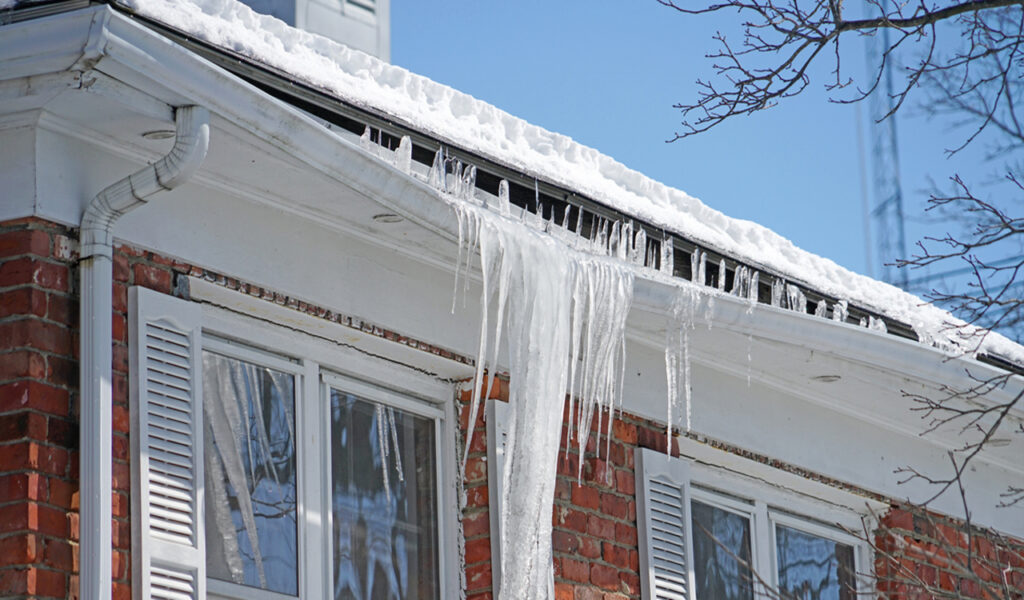Best Building Materials For Cold Climates

Building your home from the ground up is a dream but it also is a herculean task. For starters, you need to be thorough with your homework about the geography, topography and the choices you make about the location of your home. Once you have zeroed-in on the primary location, all the other questions and subsequent decisions follow. To that effect, a lot of factors need to be taken into account when you set out to construct your new home. A majority of these factors will help you determine the type of materials that you will need to use in the construction process.
One such tricky condition that affects the process of building a home is the weather. A cold sleet-like climate and chilly weather conditions require that the construction of the home must be done in a certain way to withstand the weather. For the general comfort of living to longevity, it is essential that certain materials be specially used that are more prone to endure the cold climate.
Irrespective of the structure that you are planning to build, taking into account the weather and using appropriate building materials and techniques are imperative. Let us take a look at different types of materials and building requisites that need to be looked into during construction.
Different materials used for building in Cold Climates
Finding the right blend between aesthetics and performance is of extreme importance when undertaking construction projects. What may look good may not guarantee the best performance. In the same way, something that stands the test of the weather may not be the most appealing material that can be used for building. For this very reason, striking the right balance between utility and visuality is of utmost importance.
If the area in which you are building is extremely cold, the chances are that it is going to be more wet, damp and frozen than usual. So you will need to choose materials that do not react largely with being wet and sustain that kind of weather extremity. You will need to choose materials that will not crack or break if frozen for too long as well.
Here are five different materials you can consider using for construction in cold climates:
1. Brick
Since brick is hardened in the kiln when it's being made, it is tough and durable to withstand cold extreme temperatures and chilly climatic conditions. It can stand against chilly winds and can keep the indoors of the structure pretty warm in case the temperature outside drops. In case of any damages caused by the cold weather, brick as a building material is also very easy to repair and replace.
2. Stone Tiles
Several types of stones are thinly shaped as tiles and veneers that are used to cover the walls and floors of homes and other building structures. In rough cold climatic conditions, popular stones like granite, marble and limestone are used to cover the outer part of the building for protection. Adding these veneers add an extra layer of insulation and warmth that is desperately needed in the cold climate.
3. Concrete
Concrete is definitely the most versatile building material that can be used in construction. Whether required for a hot climatic construction or for a structure to be built in a cold climate area, concrete is one of the best bets out there. It has properties that guarantee enduring extreme climatic conditions. It makes the building warmer in cold climates and cooler in hot climatic conditions. Concrete is also extremely easy to repair and re-do in case of any damages. The best part about using concrete in construction is that it can be aesthetically transformed with paint and many other add-ons multiple times.
4. Metal Siding Panels
Metal Siding Panels are an easy option and the most popular of the materials that can be used in your home to keep protected against cold climates. They are generally low maintenance and can withstand both hot and cold climatic conditions. The plus with metal sidings is that you do not need to tend to them or treat them periodically to prevent them from rotting. Basic wear and tear maintenance will suffice with these panels.
5. Wood
Wood is a popular and a low-cost choice of building material for cold climates. Wood is an amazing insulator so using it in the construction will ensure that the structure is warm and cozy. Wood can also be used for external trims as long as it is chemically treated with preservatives to avoid damage and rot. Another plus about using wood is that it is a great material for sound insulation.
All the above materials can be revamped and revamped for that aesthetic appeal but concrete alone presents most scope of working and re-working. If we had to choose, we would choose concrete.
Area-wise usage of building materials
We discussed in detail about the materials that we can consider using in the building process. Not all materials can be used in a blanket way across the whole structure. If you are considering
working room-wise construction, then let us also run through the usage of said materials in specific rooms and where they work best.
1. Foundation
The foundation or the basement is perhaps one of the most neglected parts of any structure. It is imperative to have a finished and well-done foundation as the strong firm structure on which the construction takes place. It is to be noted that the foundation has enough vents to make sure that the air circulation is ample and the moisture from the cool weather and ice does not settle in the structure. It is also advised to have an oil furnace heater near the foundation vents to avoid frost from settling in the walls of the structure.
2. Flooring
Flooring is another great contributor to the general temperature of the structure. The materials that can be used for flooring in cold climatic conditions are vinyl, tiles and rubber flooring. Lot of times, wood is also used in flooring but it does not do a very good job of providing warmth. In cases where the flooring is compromised and you are looking for a warm solution to the same, opt for carpeting. Carpets are a great way to ensure warmth.
3. Roofing
The roof, along with outer walls, are the first contact of the structure with the cold chilly climate. Therefore, ice, wind and frost will all hit the roof first and it has to be durable enough to take the full blast of the weather. The roof has to be strong and resilient enough to take in the harsh conditions, but it also has to be able to not let the chill and frost sit on the structure for a very long time. Metal Roofs and Asphalt Roofs are popular choices for roofing for building in cold climates. They withstand the cold weather well and provide decent insulation to the structure inside.
4. Windows
Windows are often not considered a very big contributor to protection against chilly weather. But the size and likes of it matter, especially when the structure has to ensure an extreme climate. A lot of construction structures have single pane windows. It is advised that in colder climatic conditions, it is better to opt for multi-pane windows. They provide extra heat and insulation for the structure.
Insulation and its Importance
Insulation in the most simple terms means to hold energy within. When we talk about insulation in terms of temperature and construction, we refer to the material’s ability to retain and hold the heat/cold within the structure for the longest period of time. Insulation in construction is of
utmost importance as it can contribute heavily to determining how much you will be spending on energy bills for the rest of your life.
If you are building in a cold place, it is necessary to use building materials that insulate the heat in the structure. There is a variable, R-Value that determines what kind of insulation would work best for your construction needs. If you are building in a cold place, the R-Value of 49 or higher is the best option to go for.
There are three types in which insulation can be introduced in the construction of your structure:
1. Fiberglass Insulation: Best and least expensive option. Usually available from R-Value 49 to 60.
2. Blown-in Insulation: Perfect for extremely cold temperatures. Has the highest R-Value and is quite an expensive option.
3. Spray-foam Insulation: Slightly lower R-Value but perfect for moderate cold and hot climatic conditions.
Some more Building Material for Cold Climates and other checks
Apart from the bigwigs, there are smaller players in the construction setup that need to be taken care of against the cold weather. Regularly, the walls need to be checked for moisture traps, frost or cracks. The pipes and the plumbing need to be checked for cracking or holes due to freezing. For protecting smaller areas and materials around the structure from the wear and tear caused due to the cold climate, a heating tape can be used. To avoid the pipes from freezing, heating tapes of any sturdy, good brand can be used.
Conclusion
Construction is a thoroughly planned and skillfully implemented process. While it does take into account existing weather and topological conditions into account, it is also necessary to be prepared for extremity, especially when it is cold and chilly.




